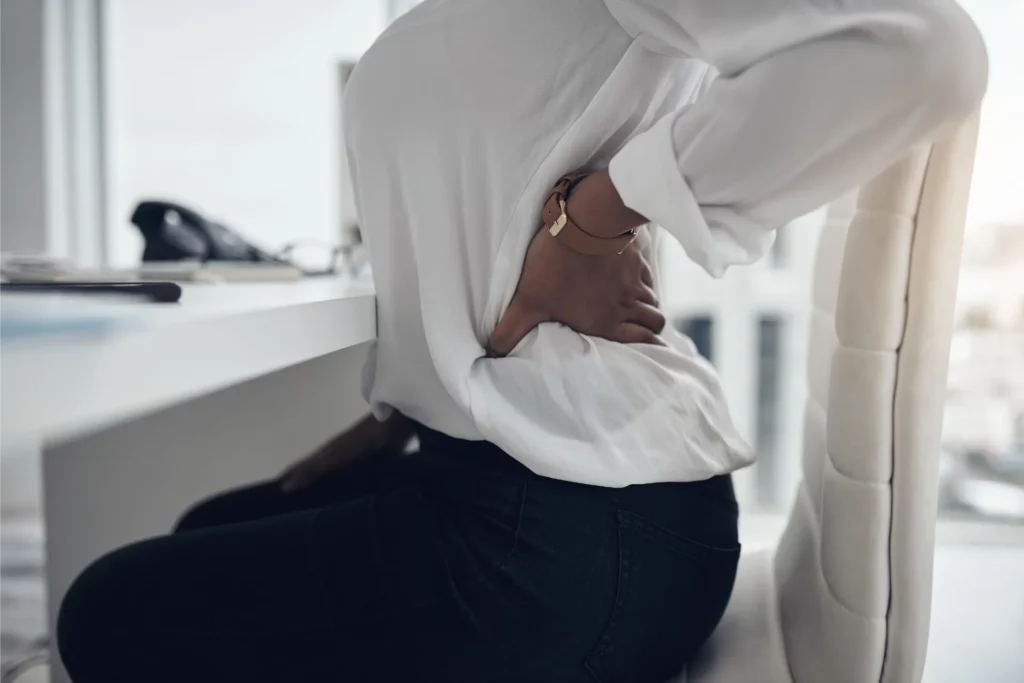Hip Pain
The Hip Joint
The hip is a large secure ball and socket joint deep in the groin that is designed to cope with repeated movement and impact.
It can be affected by wear and tear, fractures, ligament tears and muscle strains. It is also one of the main joints affected by Osteoarthritis.
A hip problem can cause pain in your thigh, groin, back or buttock. Similarly, pain you feel in the hip area may be caused by a problem in your back or the sacro- iliac joint in the pelvis.
Even a hip x-ray is notoriously poor in providing the answer.
A proper diagnosis is therefore crucial.
After discussing the history of your problem our physiotherapists will conduct a comprehensive assessment and thorough examination of all these areas to decide on the most effective hip pain treatment.
Do you have a hip problem?
Have you been given a vague diagnosis or had unhelpful x-rays?
Is hip pain keeping you from your sport or not getting better as quickly as you thought?
If so, make an appointment now to see one of our experienced physiotherapists.
Only when you know the cause of your pain can you start to work towards a solution.

Hip conditions
Because the hip is such a major component of our weight bearing activities it is extremely disabling if things go wrong. The most basic activities such as walking or sitting require flexibility and strength within the hip and all sports involving running, kicking, jumping and stretching put it under even more stress.
So if you have any concerns that your hip joint is not working as well as it should then come to us to find out exactly what the problem is and start your hip pain treatment now. Only then can you start on your journey to recovery.
Osteoarthritis
The hip is commonly affected by Osteoarthritis. The cartilage covering the ends of the bones become worn and rough making walking painful.
The last resort for this is a hip replacement but with a limited life of 10-15 years they are often avoided.
The alternative is conservative treatment i.e. Physiotherapy. Whilst we cannot ‘cure’ arthritis there are many forms of hip pain treatment that can help.
These include joint mobilising techniques, massage, acupuncture, electrotherapy and exercises to improve the strength and movement.
Physiotherapy is also essential following a hip replacement to retrain balance and improve the strength of muscles around the new joint.
Hip Tendon Injuries
The muscles on the inside of the thigh attach to the pelvis. If these are stretched or strained then pain will be experienced in the groin area. This is especially common with kicking sports or overuse of weights.
We initially reduce the pain and inflammation using ice, ultrasound and specialised tendon massage.
Stretches and strengthening exercises are progressed as healing occurs.
Without accurate, progressive rehabilitation the injury commonly recurs and people often repeat a cycle of rest and re-injury. Recovery is more difficult the longer this persists.
Trochanteric Bursitis
Bursae are small fluid filled sacs that protect muscles and tendons from being rubbed by the bones they pass over. The trochanteric bursa is over the bony protrusion on the outside of the upper thigh.
It can be affected by direct trauma or by a poor walking or running pattern which then overuses the muscles that pass over the trochanteric bursa.
Initially we reduce the swelling and inflammation with ice, ultrasound, acupuncture and soft tissue techniques.
If the cause is due to muscle overuse we address this with specialist exercises, core strengthening, footwear and possibly orthotics.
If we don’t address the cause of the bursitis then the problem will return.
We look to providing a solution-not just treatment of the symptoms.
